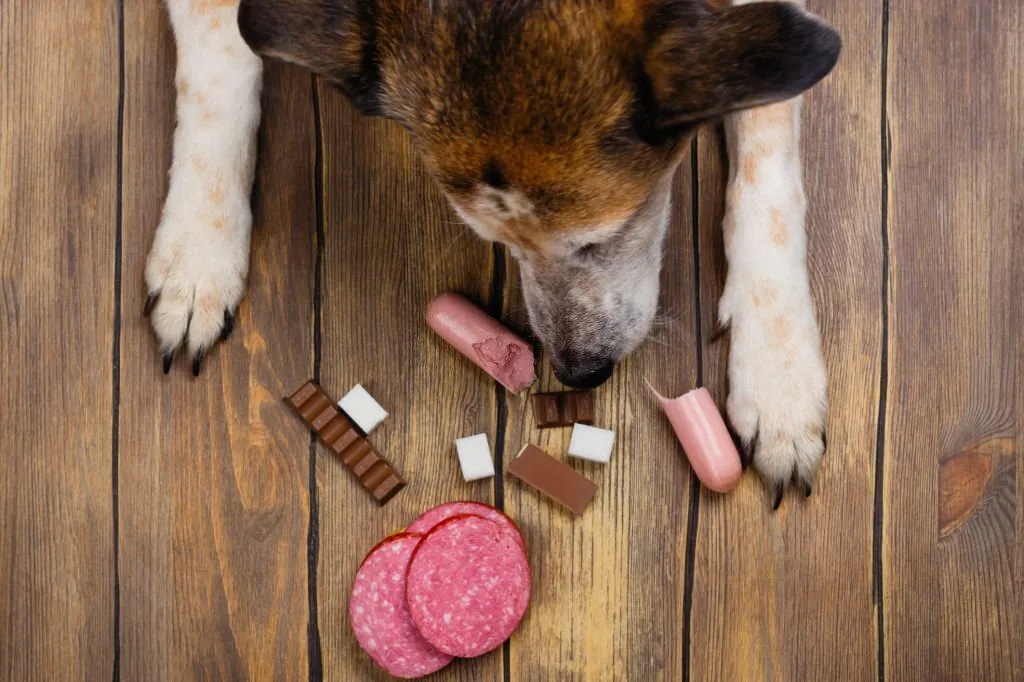Introduction
Chocolate is a popular treat for humans, but it can be toxic to dogs. As a pet owner, it is important to know how much chocolate is safe for your furry friend to consume. Chocolate poisoning in dogs can lead to serious health problems and even death. In this article, we will discuss the dangers of chocolate for dogs, the toxic ingredient in chocolate, factors that affect a dog’s sensitivity to chocolate, symptoms of chocolate poisoning, what to do if your dog eats chocolate, safe amounts of chocolate for different breeds and sizes, common sources of chocolate that dogs may accidentally consume, alternatives to chocolate treats for dogs, tips for preventing chocolate poisoning, and seeking veterinary care for chocolate poisoning.

Understanding the dangers of chocolate for dogs
Chocolate contains a toxic ingredient called theobromine, which is harmful to dogs. Theobromine is a stimulant that affects the central nervous system and cardiovascular system. Dogs are unable to metabolize theobromine as efficiently as humans, which means that it can build up in their system and cause toxicity. The amount of theobromine in chocolate varies depending on the type of chocolate, with dark chocolate containing the highest amount and white chocolate containing the lowest.
The effects of chocolate poisoning in dogs can range from mild to severe. Mild symptoms include vomiting and diarrhea, while severe symptoms include hyperactivity, seizures, and an increased heart rate. In extreme cases, chocolate poisoning can lead to coma and death.
Theobromine: the toxic ingredient in chocolate
Theobromine is a bitter alkaloid that is found in cocoa beans, which are used to make chocolate. It is a stimulant that affects the central nervous system and cardiovascular system. Theobromine is similar to caffeine and can cause similar effects in dogs, such as increased heart rate and hyperactivity.
Dogs are unable to metabolize theobromine as efficiently as humans, which means that it can build up in their system and cause toxicity. The amount of theobromine in chocolate varies depending on the type of chocolate, with dark chocolate containing the highest amount and white chocolate containing the lowest.
Factors that affect a dog’s sensitivity to chocolate
Several factors can affect a dog’s sensitivity to chocolate, including age, weight, and breed. Puppies and older dogs are more sensitive to the effects of theobromine than adult dogs. Dogs that are overweight or obese may also be more sensitive to the effects of theobromine. Certain breeds, such as Labrador Retrievers, are more likely to consume chocolate than other breeds.

Symptoms of chocolate poisoning in dogs
The symptoms of chocolate poisoning in dogs can vary depending on the amount of chocolate consumed and the size of the dog. Mild symptoms include vomiting and diarrhea, while severe symptoms include hyperactivity, seizures, and an increased heart rate. In extreme cases, chocolate poisoning can lead to coma and death.
Other symptoms of chocolate poisoning in dogs include restlessness, panting, muscle tremors, and increased urination. If you suspect that your dog has consumed chocolate, it is important to monitor their symptoms and seek veterinary care immediately.
What to do if your dog eats chocolate
If your dog eats chocolate, it is important to seek veterinary care immediately. Call your veterinarian and provide them with information about the type of chocolate consumed, the amount consumed, and the time of consumption. Your veterinarian may recommend inducing vomiting to remove the chocolate from your dog’s system.
It is important to never induce vomiting without first consulting with your veterinarian, as this can be dangerous in some cases. Your veterinarian may also recommend monitoring your dog’s symptoms and providing supportive care, such as intravenous fluids and medications to control seizures.
How much chocolate is too much for different dog breeds and sizes
The amount of chocolate that is toxic to dogs varies depending on the type of chocolate, the amount consumed, and the size of the dog. As a general rule, the darker the chocolate, the more toxic it is to dogs. White chocolate contains the lowest amount of theobromine and is less toxic to dogs.
A chart showing safe amounts of chocolate for different breeds and sizes can be found online. It is important to note that any amount of chocolate can be harmful to dogs, and it is best to avoid giving them chocolate altogether.
Common sources of chocolate that dogs may accidentally consume
Dogs may accidentally consume chocolate from a variety of sources, including chocolate bars, baked goods, and cocoa powder. Chocolate bars and baked goods are common sources of chocolate that dogs may find appealing. Cocoa powder is also a common ingredient in some baked goods and can be harmful to dogs if consumed in large amounts.
It is important to keep chocolate and chocolate-containing products out of reach of your dog to prevent accidental consumption.
Alternatives to chocolate treats for dogs
There are many alternatives to chocolate treats for dogs that are safe and healthy. Carrots, apples, and peanut butter are all great options for dogs. These treats are low in calories and provide essential vitamins and nutrients.
Preventing chocolate poisoning in dogs: tips for pet owners
Preventing chocolate poisoning in dogs is important for their health and well-being. Some tips for pet owners include keeping chocolate out of reach, educating family and friends about the dangers of chocolate for dogs, and using alternative treats.
It is also important to be aware of the signs and symptoms of chocolate poisoning in dogs and to seek veterinary care immediately if you suspect that your dog has consumed chocolate.
Seeking veterinary care for chocolate poisoning in dogs
Seeking veterinary care for chocolate poisoning in dogs is important for their health and well-being. Your veterinarian can provide supportive care, such as intravenous fluids and medications to control seizures. They can also monitor your dog’s symptoms and provide treatment as needed.
It is important to seek veterinary care immediately if you suspect that your dog has consumed chocolate, as the effects of chocolate poisoning can be life-threatening.
Conclusion
Chocolate is a popular treat for humans, but it can be toxic to dogs. Theobromine, a toxic ingredient in chocolate, can cause serious health problems and even death in dogs. It is important for pet owners to be aware of the dangers of chocolate for dogs and to take steps to prevent accidental consumption.
If your dog consumes chocolate, it is important to seek veterinary care immediately. By being aware of the signs and symptoms of chocolate poisoning in dogs and taking steps to prevent accidental consumption, you can help keep your furry friend safe and healthy.